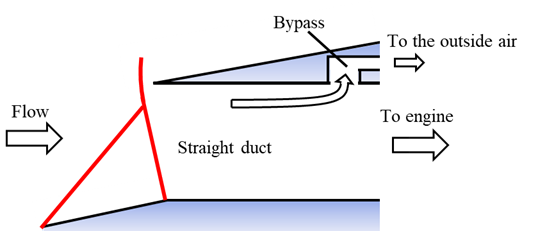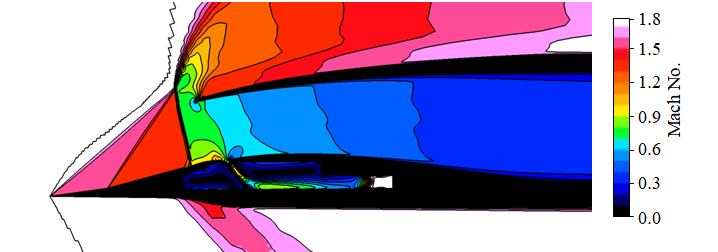Basic research for system integration of silent supersonic airplane
JAXA Supercomputer System Annual Report February 2021-January 2022
Report Number: R21ETET01
Subject Category: Skills Acquisition System
- Responsible Representative: Yoshikazu Makino, Aviation Technology Directorate, Silence Supersonic Aircraft Team
- Contact Information: Hiroaki Ishikawa(ishikawa.hiroaki2@jaxa.jp)
- Members: Masahiro Doi, Hiroaki Ishikawa, Masahiro Kanazaki, Yuki Kishi, Issei Kikura, Ryo Shimada, Shota Yamamoto, Takuma Tsuda
Abstract
The system integration design technologies for achieving low sonic-boom, low aerodynamic drag, low landing and take-off noise, and light weight simultaneously are the key technologies for future supersonic airplanes. JAXA is promoting the R&D for these technologies based on our experiences of demonstrating the advanced low-drag and low-boom design concepts. Ref. URL: http://www.aero.jaxa.jp/eng/research/frontier/sst/
Reference URL
Please refer to http://www.aero.jaxa.jp/eng/research/frontier/sst/ .
Reasons and benefits of using JAXA Supercomputer System
To achieve low sonic-boom, low aerodynamic drag, low landing and take-off noise, and light weight simultaneously, the multi-objective optimization tools are utilized in the design study. The super computer is necessary to obtain the multiple objective function efficiently with many numerical simulations.
Achievements of the Year
Buzz, the biggest issue in the operation of inlets for supersonic aircraft, is caused by the inflow of shear layers generated in the external compression region of the inlet. For surpressing the buzz, we study on a design concept applying constant area duct which owns bypass duct to the inlet instead of conventional subsonic diffuser (Fig. 1). In order to asses feasibility of the inlet concept, a two dimensional inlet model which does not have the bypass was designed as a performance reference and evaluated by CFD analysis. The CFD results show the inlet model has adequate characteristics in total pressure recovery and aerodynamicl drag (Fig. 2).
Publications
N/A
Usage of JSS
Computational Information
- Process Parallelization Methods: MPI
- Thread Parallelization Methods: Automatic Parallelization
- Number of Processes: 128 – 144
- Elapsed Time per Case: 24 Hour(s)
JSS3 Resources Used
Fraction of Usage in Total Resources*1(%): 0.03
Details
Please refer to System Configuration of JSS3 for the system configuration and major specifications of JSS3.
| System Name | CPU Resources Used(Core x Hours) | Fraction of Usage*2(%) |
|---|---|---|
| TOKI-SORA | 249790.39 | 0.01 |
| TOKI-ST | 79237.94 | 0.10 |
| TOKI-GP | 0.00 | 0.00 |
| TOKI-XM | 0.00 | 0.00 |
| TOKI-LM | 133.72 | 0.01 |
| TOKI-TST | 0.00 | 0.00 |
| TOKI-TGP | 0.00 | 0.00 |
| TOKI-TLM | 0.00 | 0.00 |
| File System Name | Storage Assigned(GiB) | Fraction of Usage*2(%) |
|---|---|---|
| /home | 1455.00 | 1.45 |
| /data and /data2 | 88165.00 | 0.94 |
| /ssd | 5645.00 | 1.46 |
| Archiver Name | Storage Used(TiB) | Fraction of Usage*2(%) |
|---|---|---|
| J-SPACE | 7.41 | 0.05 |
*1: Fraction of Usage in Total Resources: Weighted average of three resource types (Computing, File System, and Archiver).
*2: Fraction of Usage:Percentage of usage relative to each resource used in one year.
ISV Software Licenses Used
| ISV Software Licenses Used(Hours) | Fraction of Usage*2(%) | |
|---|---|---|
| ISV Software Licenses(Total) | 1519.32 | 1.06 |
*2: Fraction of Usage:Percentage of usage relative to each resource used in one year.
JAXA Supercomputer System Annual Report February 2021-January 2022




